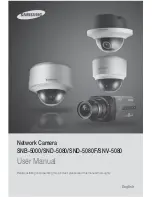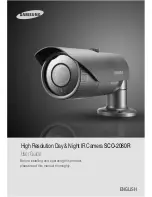
Detection Systems, Inc.
130 Perinton Parkway, Fairport, New York, USA 14450-9199
(716) 223-4060 • (800) 289-0096 • Fax: (716) 223-9180
Installation Instructions
for the
DS1520 and DS1530
Seismic Vibration Detectors
1.0 General Description
The DS1520 and DS1530 are Seismic Vibration Detectors designed to de-
tect break-in attempts to vaults, safes, night deposit boxes, automatic teller
machines, and other enforced physical areas.
The DS1520 is primarily used for the protection of vaults, safes, cabinets,
and walls. The DS1530 is primarily used for the protection of night deposit
boxes and automatic teller machines.
2.0 Specifications
• Input Power: 9.0 to 15.0 volts DC. Two volts AC maximum ripple peak-
to-peak.
• Standby Power: There is no internal standby battery. The unit should be
connected to DC power sources capable of supplying standby power in
the event primary power fails. Four hours minimum of standby power is
required for U.L. Listed Requirements.
• Current Draw: 10.0 mA, maximum.
• Alarm Output: Form C relay contact rated at 100.0 mA @ 28.0 volts DC.
Transfer on alarm for 1 to 2 seconds.
• Tamper: Normally closed tamper switch rated at 100.0 mA @ 28.0 volts
DC.
• Sensitivity: Five sensitivity levels.
• Sabotage Protection: Multi-point tamper sensing system detects re-
moval of cover, removal of detector from its mounting surface, and at-
tempts to burn the detector.
• Temperature Range: Operational: -4 to +131° F (-20 to +55° C), (32 to
120° F, 0 to 49° C for U.L. Listed Requirements). Storage: -58 to +158° F
(-50 to +70° C).
• Relative Humidity: Operational - 90 percent @ 86° F (30° C).
3.0 Accessories
3.0.1 Testing Accessories
VS A14: Self contained test transmitter.
VS A15: Hand held test transmitter.
VS A16: Movable test detector.
3.0.2 Mounting Accessories
VS A1: Mounting plate for use when mounting to concrete walls.
VS A2: Recess mounting box for use when mounting in concrete walls.
VS A3: Weather resistant mounting box.
VS A4: Steel mounting plate for use when mounting to steel surfaces by
welding.
VS A5: Floor mounting recess box. Similar to the VS A2.
VS A6: Movable mounting kit with day and night position plates.
VS A7: Key-hole protection kit.
VS A8: 5 mm Spacer kit for use with the key-hole protection kit.
VS A9: Armored cable kit. Flexible stainless steel conduit 6.5 feet long (2
meters) and 8 conductor cable.
VS A10:Metal junction box, sabotage protected.
VS A11:Plastic cable insert for use with square cable conduit.
VS A12:Plastic cable insert for use with round cable conduit.
VS A13:Plastic cable insert for use with double cable inlet.
.
4.0 Mounting Considerations
4.0.1 Circumstances to Avoid
Avoid electrical and mechanical devices that may create mechanical vibra-
tions in the protected structure. This includes, but is not limited to: Electric
Motors, Transformers, Fans, Air Conditioners, Water Pipes, Ultrasound
Detectors, Bells. Human Activity may also be a factor.
4.1 Range
The range of the detector is dependent on the sensitivity setting of the de-
tector and on the type of material used in the construction of the vault, safe
or ATM. Because the unit is dependent on the vibrations caused by an at-
tack, any gaps or cracks in the material will result in reduced performance of
the detector.
First, it is necessary to determine the maximum range of
the detector, based on the type of material used to con-
struct the vault, safe or ATM, then the number of detectors
required for the installation can be determined.
4.1.1 Range Guidelines for Vaults
The following chart shows the range of the detector as a function of the
type of material used in construction of the protected area, the sensitivity
setting on the detector and the possible methods of attack. These figures
should only be regarded as a guide in planning an installation. The actual
range is determined on site with a field test. Range can vary significantly
depending on construction material.
Methods o f Attack
Thermic L ance
Diamond Disk
Drillin g
S ensitivity
S etting
46 ft (14m)
26 f t (8m)
29 f t (9m)
29 f t (9m)
19 f t (6m)
19 f t (6m)
19 f t (6m)
13 f t (4m)
16 f t (5m)
16 f t (5m)
10 f t (3m)
13 f t (4m)
13 f t (4m)
6 ft (2m)
G max (1)
G max (1)
G max (1)
G ref (2)
G ref (2)
G ref (2)
G min (3)
G min (3)
G min (3)
4
4
4
5
5
5
13 ft (4m)
26 ft (8m)
10 ft (3m)
10 ft (3m)
13 ft (4m)
3 ft (1m)
6 ft (2m)
6 ft (2m)
-
3 ft (1m)
3 ft (1m)
-
-
-
-
46 ft (14m)
26 ft (8m)
29 ft (9m)
29 ft (9m)
19 ft (6m)
19 ft (6m)
19 ft (6m)
13 ft (4m)
16 ft (5m)
16 ft (5m)
10 ft (3m)
13 ft (4m)
13 ft (4m)
6 f t (2m)
Ma ter ial*
Concrete
Steel
Brick
Concrete
Steel
Brick
Concrete
Steel
Brick
Concrete
Steel
Brick
Concrete
Steel
Brick
* Note:
Conc rete is ty pe K-350 (or equivalent ).
The abov e ratings apply to t he following minimum material thicknesses:
Concrete: 10 inches, Steel: 1/4 inch, and Brick: 8 inches
46 ft (14m)
46 f t (14m)
G max
G min
1
2
3
4
5
G ref
Range
4.1.2 Layout Plans for a Vault Protection
As a general rule, a detector should be placed on each wall, floor, and
ceiling inside the vault. A detector should also be placed inside or on the
vault door. The detectors should be surface or recess mounted, and placed
high enough to keep clear of safes, document cabinets, and deposit boxes.
It is recommended that a written plan be prepared to define the location of
each detector on the vault. This will enable you to determine the amount of
detectors needed to give the vault complete coverage. A fold out plan will
help in doing this (see the following diagram).
Range
Range
Range
Range
Copyright © 1995-97 Detection Systems, Inc.
DS1520/DS1530 Installation Instructions
DSI P/N 27684D
P/N 4-20820-845 Rev B
Range


























